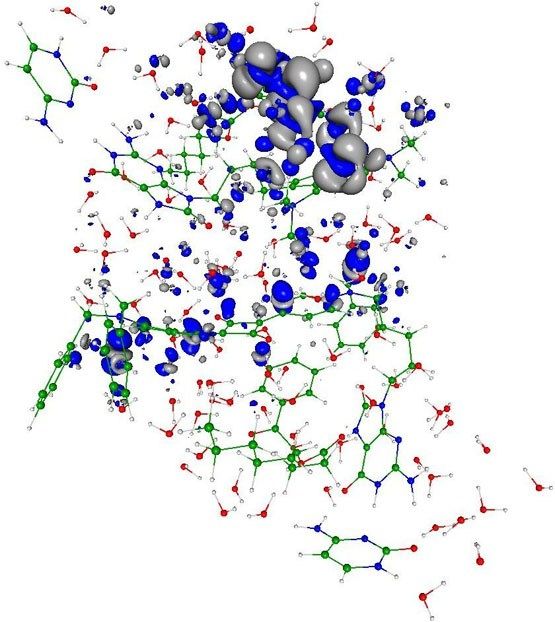Although this article is 2 years old; it covers one of the foundational areas of Quantum Biology.
Figure legend:
You can see in the enclosed figure the quantum entanglement phenomenon in the closely self-assembled two synthesized protocells system due to the photo excited electron charge transfer from one protocell to another that leads to closer self-assembly and exchange of energy and information.
Visualization of the electron charge tunneling associated with the 6th (467.3 nm) excited state. The transition is mainly from squarine molecule of the first protocell situated in the bottom of this bi cellular system to precursor of fatty acid (pFA) molecule of the second subsystem (in the top) and little from the 1,4-bis(N, N-dimethylamino)naphthalene molecule (in the top-right) to the same pFA molecule of the second subsystem (in the top). The electron cloud hole is indicated by the dark blue color while the transferred electron cloud location is designated by the gray color.
As a result, these nonlinear quantum interactions compressed the overall molecular system resulting in a smaller gap between the HOMO and LUMO electron energy levels which allows enhanced tunneling of photoexcited electrons from the sensitizer squarine and (1,4-bis(N, N-dimethylamino)naphthalene) to the pFA molecule resulting in its cleavage. The new fatty acid joins the existing minimal cell thus increasing it in size. After reaching some critical size, the minimal cell should divide (i.e. self-replicate) into two separate smaller minimal cells.










Comments are closed.